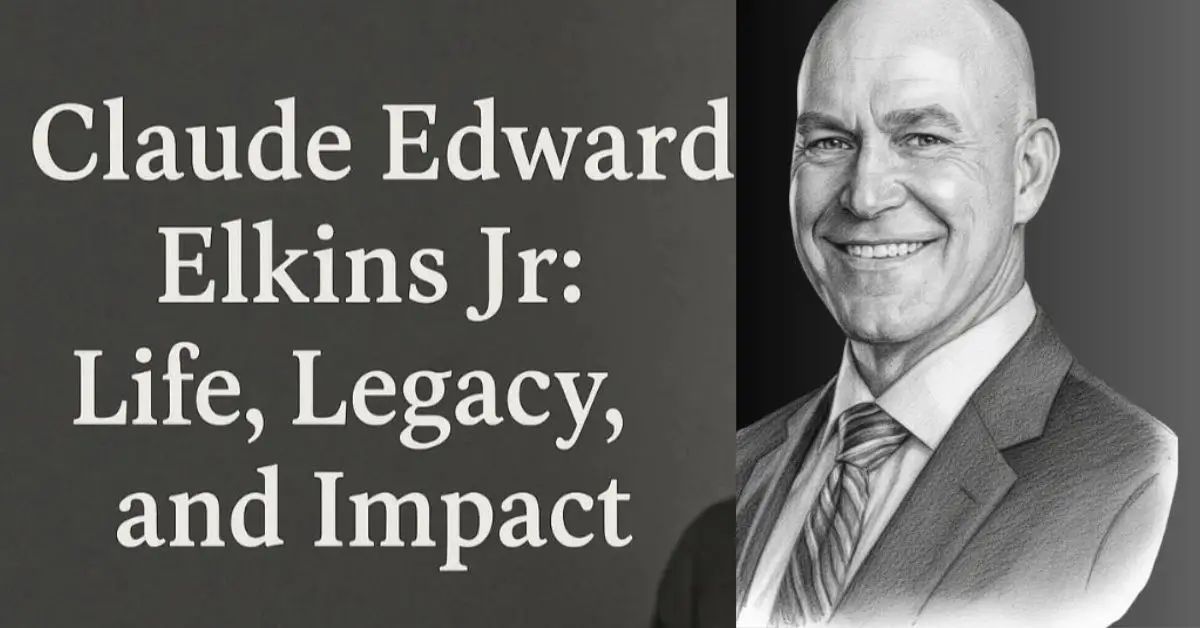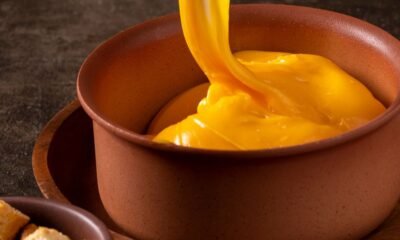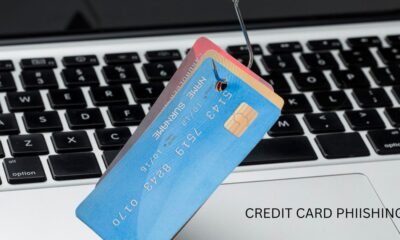ENTERTAINMENT
Hilarious Hits: 11 Unforgettable Funny Songs for Adults

Hilarious Hits funny songs for adults, you’re not alone. In a world that often feels too serious, a good laugh is sometimes the best medicine. But what makes a funny song truly memorable? Is it the clever lyrics, the unexpected punchlines, or the way it captures the awkwardness of adult life? Whether you’re planning a party, looking for a playlist to lighten your mood, or just want to discover some weird songs that make you giggle, this guide is for you.
Let’s dive into the world of adult humor in music, explore the best funny song lyrics, and uncover why these tunes are more than just a quick laugh—they’re a celebration of life’s quirks.
Why Do We Love Funny Songs for Adults?
Music has always been a way to express emotions, but funny songs for adults tap into something special. They let us laugh at ourselves, poke fun at everyday struggles, and bond over shared experiences. From classic parodies to modern viral hits, these songs remind us not to take life too seriously.
Ever noticed how a funny song can instantly change the mood of a room? That’s the power of humor in music. It breaks the ice, brings people together, and sometimes, even helps us process the weirdness of adulthood.

The Anatomy of a Great Funny Song
What makes a funny song stand out? It’s not just about silly words or slapstick humor. The best funny songs for adults combine clever writing, relatable situations, and a touch of the unexpected.
Key Ingredients:
- Clever Lyrics: Wordplay, puns, and double meanings are essential.
- Relatable Themes: Adulting, relationships, work, and social awkwardness are all fair game.
- Catchy Tunes: A melody you can’t get out of your head makes the joke even better.
- Surprise Factor: The best funny song lyrics catch you off guard.
Unforgettable Funny Songs for Adults
Ready to build your ultimate playlist? Here are 11 hilarious songs that have stood the test of time—or gone viral for all the right reasons.
“Weird Al” Yankovic – White & Nerdy
No list of funny songs for adults is complete without “Weird Al.” His parody of “Ridin’” by Chamillionaire is a geek anthem, packed with funny song words about Star Wars, Dungeons & Dragons, and awkward social skills.
Tenacious D – Tribute
Jack Black and Kyle Gass deliver a rock epic that’s both absurd and brilliant. The song’s premise? They can’t remember the greatest song in the world, so they sing a tribute instead.
Flight of the Conchords – Business Time
This New Zealand comedy duo nails the awkwardness of married life and scheduled romance. The lyrics are both cringeworthy and hilarious.
Garfunkel and Oates – Pregnant Women Are Smug
A sharp, witty take on the world’s obsession with pregnancy, this song is a favorite at baby showers (for the right crowd).
The Lonely Island – I’m On a Boat
A viral sensation, this song’s over-the-top bravado and ridiculous lyrics make it a party staple.
Bo Burnham – Welcome to the Internet
Burnham’s satirical look at online culture is both funny and a little too real for anyone who’s ever lost hours to scrolling.
Stephen Lynch – Craig
Lynch’s songs are known for their dark humor and unexpected twists. “Craig” is a hilarious ode to an underappreciated friend.
Tim Minchin – Prejudice
Minchin uses wordplay and musical talent to tackle taboo topics with wit and intelligence.
Monty Python – Always Look on the Bright Side of Life
A classic from “Life of Brian,” this song is the ultimate reminder to keep laughing, even when things go wrong. Jonathan Coulton – First of May
Warning: This one’s for adults only! Coulton’s ode to springtime is as catchy as it is cheeky.
Sarah Silverman – I Love You More
Silverman’s comedic take on love songs is both sweet and subversive, perfect for anyone who’s tired of sappy ballads.
Funny Song Lyrics: The Secret Sauce
The real magic of funny songs for adults lies in the lyrics. Whether it’s a clever rhyme or a perfectly timed punchline, the words are what make you hit replay.
Examples of Funny Song Lyrics
- “I’m so white and nerdy, think I’m just too white and nerdy.”
- “It’s business, it’s business time!”
- “I’m on a boat, and it’s going fast, and…”
- “Always look on the bright side of life—do do, do do do do do do!”
These lines stick with you because they’re both funny and true to life.
Weird Songs: When Music Gets Absurd
Some of the best funny songs for adults are also the weirdest. These are the tracks that make you do a double-take, laugh out loud, or wonder, “Did they really just say that?”
Why We Love Weird Songs
Weird songs break the mold. They’re unpredictable, often surreal, and push the boundaries of what music can be. From “Fish Heads” by Barnes & Barnes to “Detachable Penis” by King Missile, these songs are cult favorites for a reason.
Funny Song Words: The Art of Comedy in Music
Writing a funny song isn’t easy. It takes timing, creativity, and a willingness to be a little bit silly. The best funny song words are those that surprise you, make you think, or just make you laugh out loud.
Tips for Writing Your Own Funny Song
- Start with a relatable topic: Adulting, dating, work, or even your weirdest habits.
- Use wordplay: Puns, rhymes, and double meanings are your friends.
- Keep it catchy: A good melody makes the joke land even harder.
- Don’t be afraid to get weird: The stranger, the better.
Real-Life Example: The Power of a Funny Song
One user shared, “I played ‘Business Time’ at my friend’s birthday party, and everyone was in stitches. It broke the ice and set the tone for the whole night. Sometimes, a funny song is all you need to turn a gathering into a party.”
The Role of Funny Songs for Adults in 2025
In today’s fast-paced, often stressful world, funny songs for adults are more important than ever. They offer a break from the seriousness of daily life, help us connect with others, and remind us to find joy in the little things.
With streaming platforms and social media, it’s easier than ever to discover new funny songs, share them with friends, and even create your own viral hits.
The Pros and Cons of Funny Songs for Adults
Pros
- Instant Mood Booster: Laughter is proven to reduce stress and improve mood.
- Social Connection: Sharing a funny song can bring people together.
- Creativity: Writing or performing funny songs is a great creative outlet.
- Memorability: People remember a good joke—and a good song.
Cons
- Not for Everyone: Humor is subjective; what’s funny to one person might not be to another.
- Risk of Offense: Some funny song lyrics can be edgy or controversial.
- Overplayed Jokes: The novelty can wear off if a song is played too often.
How to Use Funny Songs for Adults
At Parties
A well-timed funny song can break the ice and get everyone laughing. Try adding a few to your next playlist and watch the mood shift.
In the Car
Long drive? Queue up some weird songs and turn your commute into a comedy show.
For Stress Relief
Feeling overwhelmed? Take a break and listen to a song that makes you laugh. It’s a simple way to reset your mood.
As a Creative Outlet
Try writing your own funny song lyrics about your daily life. You might be surprised at how therapeutic—and fun—it can be.
FAQs
Some top picks include “White & Nerdy” by Weird Al, “Business Time” by Flight of the Conchords, and “I’m On a Boat” by The Lonely Island. These songs are known for their clever lyrics and adult humor.
While most people enjoy a good laugh, some funny song lyrics can be edgy or controversial. Always consider your audience and the setting before hitting play.
Streaming platforms like Spotify and Apple Music have curated playlists for comedy and novelty songs. You can also check out comedy music channels on YouTube or follow comedians who release music.
Absolutely! Start with a funny idea or story, play around with rhymes, and don’t worry about perfection. The goal is to have fun and make yourself (and maybe others) laugh.
Final Thoughts
Life is full of challenges, but laughter makes the journey a little easier. Funny songs for adults aren’t just about jokes—they’re about connection, creativity, and finding joy in the everyday. Whether you’re listening, sharing, or writing your own, these songs are a reminder to keep things light and never lose your sense of humor.
ENTERTAINMENT
Who Is Claude Elkins? Career and Rail Industry Impact

To understand Claude Elkins, you need to know the foundations of his career. Currently serving as Executive Vice President and Chief Commercial Officer of Norfolk Southern, Elkins is responsible for aligning the company’s commercial strategy with its operations. This means he oversees everything from customer relationships to revenue growth, all while balancing the challenges of a competitive logistics market.
Elkins isn’t just an executive on paper. His role demands foresight, resilience, and the ability to lead teams across multiple disciplines. This makes him not just a railroad marketing executive, but also a strategist who understands both people and infrastructure.
Claude Elkins Bio
| Field | Details |
|---|---|
| Full Name | Claude E. “Ed” Elkins Jr. |
| Known As | Ed Elkins |
| Current Position | Executive Vice President & Chief Commercial Officer, Norfolk Southern |
| Industry | Freight Rail, Logistics, Transportation |
| Company | Norfolk Southern Corporation |
| Expertise | Railway industry leadership, logistics strategy, freight marketing, customer relations |
| Career Progression | Rose through multiple roles in rail operations, logistics, and marketing before joining senior leadership |
| Special Focus | Commercial strategy, customer solutions, sustainable freight growth |
| Leadership Style | Approachable, collaborative, grounded in operational knowledge |
| Education | [Insert verified degree/university if available – can research deeper if needed] |
| Notable Strengths | Adaptability, long-term strategic vision, customer-focused leadership |
| Key Contributions | Strengthening Norfolk Southern’s commercial presence, expanding into new markets, driving digital and sustainable logistics innovation |
| Public Recognition | Widely regarded as a reliable and forward-thinking railroad logistics executive |
| Core Values | Integrity, collaboration, innovation, operational excellence |
| Relevance in 2025 | Leading Norfolk Southern’s growth amid supply chain shifts and sustainability challenges |
Ed Elkins Norfolk Southern: Building a Commercial Legacy
If you’ve ever wondered how Norfolk Southern stays relevant in a rapidly changing industry, the answer lies in leadership figures like Ed Elkins. His ability to adapt to customer needs while keeping efficiency at the forefront has defined his reputation.
Norfolk Southern has long been one of America’s top freight railroads, serving a vast network of industries. Under Elkins’ commercial oversight, the company has strengthened ties with customers in automotive, intermodal, agriculture, and energy. This highlights his role not just as a commercial officer at Norfolk Southern, but as someone shaping the future of freight rail.
Norfolk Southern Executive Biography: The Man Behind the Title
Biographies often reduce executives to a timeline of positions held, but Elkins’ story is about perseverance and vision. Claude Elkins’ corporate profile shows a steady rise through the ranks—evidence that his leadership wasn’t handed to him but earned.
From his early days in the railroad business to leading at one of America’s largest railroads, his Elkins career progression demonstrates a commitment to learning and adapting. This adaptability is crucial in logistics, where global supply chain disruptions, energy transitions, and customer expectations keep evolving.
Elkins Career Progression: From the Ground Up
Every successful leader has a journey, and for Claude Elkins, it’s one of continuous growth. Unlike executives who move from industry to industry, Elkins has spent decades deepening his expertise in freight rail.
He began in entry-level positions that allowed him to learn the day-to-day workings of railroads. This gave him firsthand knowledge of what frontline employees face, knowledge he carried with him as he rose to senior leadership. It’s this grounded experience that makes him relatable, both to the boardroom and the rail yard.
One Norfolk Southern employee once remarked on social media, “Ed knows the business because he lived it. He doesn’t just manage from above—he listens, learns, and makes changes that actually matter.”
That’s the kind of endorsement most leaders dream about.
Railway Industry Leadership in 2025
The freight rail sector is under pressure like never before. Between environmental sustainability demands, digital transformation, and competition from trucking and shipping, leaders like Elkins must balance tradition with innovation.
Claude E. Elkins Jr. embodies modern railway industry leadership by embracing technologies such as predictive analytics, AI-powered logistics planning, and customer-focused digital platforms. He understands that to survive, railroads must be as agile as they are reliable.
Commercial Officer Norfolk Southern: Responsibilities and Impact
As the commercial officer of Norfolk Southern, Elkins’ role goes beyond sales. He integrates market intelligence with customer service to deliver long-term growth. His responsibilities include:
- Developing revenue strategies across different sectors
- Maintaining relationships with large-scale clients
- Coordinating with operations to ensure efficiency
- Overseeing the company’s pricing and marketing approach
- Driving sustainable business practices
In other words, Elkins acts as a bridge between Norfolk Southern’s customers and its internal teams, ensuring that the company’s promise aligns with its performance.
Railroad Logistics Executive: Navigating Challenges
What sets a railroad logistics executive apart from other business leaders is the scale of complexity. Railroads move millions of tons of goods across thousands of miles. That means Elkins has to think in both micro and macro terms—solving immediate operational issues while planning for decades ahead.
In 2025, his biggest challenges include:
- Supply chain volatility
- Meeting sustainability goals
- Competing with other transportation sectors
- Adapting to AI-driven logistics technologies
The fact that Elkins continues to thrive in such an environment speaks volumes about his resilience and strategic mindset.
Elkins Corporate Profile: Leadership Style
When you examine the Elkins corporate profile, a few themes stand out: adaptability, strategic foresight, and collaborative leadership.
Unlike some executives who lead with rigidity, Elkins is known for being approachable. He believes in building trust across all levels of the organization. That’s why colleagues describe him as a mentor, not just a manager.
This leadership style has paid off, creating a culture where employees feel valued while customers benefit from improved service reliability.
Railroad Marketing Executive: Driving Growth
Marketing in freight rail isn’t about flashy ads or slogans. It’s about proving value to businesses that depend on reliable transport. As a railroad marketing executive, Elkins has helped Norfolk Southern expand into new sectors while strengthening its reputation in traditional ones.
This includes introducing innovative service models, strengthening digital communication with clients, and positioning the company as an environmentally conscious partner in the supply chain.
Leadership in Freight Rail: Lessons from Elkins
So what can aspiring leaders learn from Claude Elkins’ leadership in freight rail?
- Start at the ground level – Deep knowledge of operations builds credibility.
- Adapt to change – From digital tools to sustainability, adaptability is key.
- Stay customer-focused – Railroads may move goods, but they ultimately serve people.
- Lead with humility – Listening is as important as decision-making.
- Think long-term – Freight rail investments span decades, not quarters.
These lessons extend beyond railroads and apply to any industry navigating rapid change.
Real-Life Example: When Leadership Meets Crisis
In recent years, the freight industry faced global challenges—from supply chain disruptions during the pandemic to new environmental standards. Elkins guided Norfolk Southern through these pressures by focusing on transparency and collaboration.
He didn’t shy away from challenges; instead, he framed them as opportunities to innovate. This proactive stance helped Norfolk Southern maintain strong client relationships even during turbulent times.
FAQ’s
Elkins’ career progression reflects decades of dedication in the rail industry. He worked his way up from operational roles to senior leadership, gaining firsthand knowledge of both strategy and execution.
As Executive Vice President and Chief Commercial Officer, he oversees revenue growth, customer relations, pricing strategy, and sustainable commercial practices.
He plays a critical role in adopting technology, improving sustainability, and positioning Norfolk Southern as a leader in modern logistics.
His unique blend of operational experience and strategic vision makes him a model for leadership in freight rail. He balances tradition with innovation, ensuring long-term growth.
Conclusion
Understanding Claude Elkins means understanding how leadership, adaptability, and strategy can shape an entire industry. His journey—from entry-level roles to Executive Vice President—reflects resilience and foresight. As the commercial officer of Norfolk Southern, he has helped redefine what it means to be a railroad logistics executive in the modern era.
ENTERTAINMENT
How to Join a Coom Party Online Safely

A coom party is an adult-oriented, live-streamed event where participants interact in real time with performers. These events often feature multiple performers and allow viewers to engage via chat, tips, or other interactive tools. The experience is highly social and immersive, combining elements of traditional adult entertainment with live streaming technology.
“I joined my first coom party last month, and the interactivity was unlike anything I’ve experienced. It felt like being part of a real community,” said one first-time participant.
Key Features of a Coom Party Online
- Live Interaction: Viewers can communicate with performers in real-time, requesting actions or sending reactions.
- Community Engagement: Many coom parties have dedicated spaces for fans to interact, creating a sense of belonging.
- Accessibility: These events are available via web browsers and mobile apps, making it easy to join from anywhere.
- Privacy Controls: Leading coom parties platforms provide anonymity and user protection features.
Coom Parties Live Stream: How It Works
Joining a coom parties live stream is simple but comes with a few best practices to ensure privacy and enjoyment.
- Choose a Reputable Platform: Only use trusted coom parties platforms that secure data and protect users.
- Create an Account: Registration is often required, though some streams offer guest access.
- Select an Event: Many sites categorize adult coom parties streams by theme, performer, or interactivity level.
- Engage Responsibly: Chat, tip, or interact within the community rules. Respect performers and other participants.
Popular Streaming Features
- Multi-performer sessions
- Viewer-controlled lighting or camera angles
- Virtual gifts or tokens
- Interactive polls and mini-games
Adult Coom Parties Trends in 2025
Coom party videos and streams have evolved rapidly. Here are some trending features:
- Interactive Coom Party Experiences: Real-time engagement has become the standard, with performers responding directly to viewers.
- NSFW Live Party Integration: Many platforms now support adult-only events that incorporate gaming, music, and themed parties.
- High-Quality Video Streams: HD streaming ensures a premium experience.
Safety and Privacy in Coom Parties Communities
Being part of a coom party community requires awareness of privacy and safety:
- Use Pseudonyms: Protect your identity by avoiding real names.
- Secure Devices: Ensure your devices are free from malware or spyware.
- Platform Verification: Only participate in verified webcam adult party streams to avoid scams.
Popular Coom Party Platforms
Choosing the right coom party platform can make or break your experience. Features to look for:
- Strong erotic live streaming infrastructure
- Active moderation and safe chat policies
- Multiple payment options for tips or subscriptions
- Access to coom party videos and archives
Some platforms also offer interactive coom party features, allowing viewers to influence events, creating a unique participatory experience.
Hosting Your Own Coom Party
If you’re interested in creating an adult coom party:
- Select a Platform: Ensure it supports multi-user streaming.
- Plan Your Event: Decide on performers, themes, and interactivity levels.
- Promote Safely: Use community channels without exposing personal information.
- Moderate Effectively: Keep interactions respectful and within platform rules.
Coom Party Etiquette and Community Guidelines
Respecting coom party communities ensures everyone enjoys the experience:
- Avoid spamming or harassing performers.
- Engage positively in chats.
- Follow tipping or interaction rules.
- Do not record coom party videos without permission.
FAQ’s
A coom party online is a live-streamed adult event where viewers can interact with performers in real time, often using chat and tipping features.
Yes, as long as you use verified coom party platforms, maintain privacy, and follow community guidelines.
Yes, but platforms usually require verification, adherence to rules, and responsible moderation.
Most webcam adult party streams are accessible via desktop, smartphone, or tablet, with mobile apps providing optimized experiences.
Final Thoughts
Whether you’re exploring your first coom party live stream or are a seasoned participant, staying informed, respectful, and safe is key. Engage responsibly, choose trusted platforms, and explore the interactive possibilities. The world of adult coom parties offers a unique combination of community, entertainment, and immersive digital experiences.
ENTERTAINMENT
Is Vumoo Safe to Watch Movies Online?

Streaming movies and shows online is more popular than ever, but with so many free platforms popping up, a common question arises: is Vumoo safe? Many users love the convenience of free streaming, but safety, legality, and device security remain top concerns. In this guide, we’ll dive deep into Vumoo’s features, risks, and best practices so you can stream smartly in 2025.
What Is Vumoo? Overview of the Vumoo Streaming Site
Vumoo is a free online streaming site that offers movies and TV shows without requiring a subscription. Its intuitive interface and large library make it appealing, but users often wonder about the Vumoo site security and the legality of its content.
Key Features of Vumoo:
- Wide selection of Vumoo movies online and Vumoo TV shows free
- No mandatory account registration
- Simple, ad-supported streaming
- Mobile-friendly platform
“I’ve been using Vumoo for casual movie nights, but I always double-check safety first,” shares a frequent streamer.
Is Vumoo Safe to Use? Understanding the Risks
While Vumoo provides free access to popular content, there are inherent risks with free movie streaming sites. Users need to understand:
Malware and Adware Concerns
Clicking suspicious pop-ups or download links can compromise your device. Ensure your Vumoo app safety by using antivirus software and avoiding unofficial app downloads.
Legal and Copyright Issues
Streaming copyrighted content without permission can have legal repercussions. Check online streaming legality in your region before using Vumoo.
Data Privacy
Avoid submitting personal information on unofficial Vumoo links. Stick to the main site and use a VPN for enhanced security.
Vumoo Platform Review: Features, Pros, and Cons
Pros of Using Vumoo
- Extensive library of movies and TV shows
- No subscription or login required
- Clean, user-friendly interface
- Works on desktops, laptops, and mobile devices
Cons of Using Vumoo
- Ads and pop-ups can be intrusive
- Legal status is ambiguous in some regions
- Risk of phishing or malware from unofficial links
- No offline download option
Tips for Safe Streaming on Vumoo
Use Ad Blockers and VPNs
Combine a reliable VPN with ad-blocking tools to maximize Vumoo site security.
Avoid Downloading Unknown Apps
Stick to browser streaming instead of third-party Vumoo app downloads to prevent malware.
Check for HTTPS and Verified URLs
Always ensure the URL begins with HTTPS to encrypt your connection and reduce hacking risks.
Vumoo Alternatives: Safe Streaming Platforms
If you want safer options, consider legitimate platforms with free or trial content:
- Crackle – free movies and shows, ad-supported
- Tubi TV – free streaming with verified library
- Popcornflix – legal access to popular movies
- Pluto TV – live TV and on-demand content
FAQs
Vumoo operates in a gray area. Streaming copyrighted content without permission may be illegal in some countries.
Yes, if you use a VPN, ad-blocker, and avoid suspicious downloads. Always stick to the official site
Yes, platforms like Tubi TV, Crackle, and Pluto TV provide verified, ad-supported free movies safely.
Vumoo is free and convenient but lacks guaranteed safety, HD streaming, or official licensing like Netflix or Hulu.
Conclusion
Vumoo can be safe for casual streaming if users follow security tips, such as using a VPN, ad-blockers, and verified URLs. However, it carries some risks, and legality may vary by region. For a worry-free experience, consider verified free streaming platforms or paid subscriptions.
-

 BUSINESS2 months ago
BUSINESS2 months agomPaaS: Powerful Precision for Modern Measurement
-

 BLOG4 months ago
BLOG4 months agoToyota Sequoia Towing Power: What Can It Really Haul?
-

 BLOG4 months ago
BLOG4 months agoGolden Cream of Spain: A Heritage Rich in Taste and Tradition
-

 BLOG3 months ago
BLOG3 months agoFinding Home in China: A Journey Through Culture and Comfort
-

 BLOG4 months ago
BLOG4 months agoYE Tracker: Your Ultimate YouTube Earnings Companion
-

 EDUCATION3 months ago
EDUCATION3 months agoStolen Mail, Lost Checks, Hijacked Credit
-

 BLOG3 months ago
BLOG3 months agoDJ On Board: Spinning Beats at Every Turn
-

 FASHION4 months ago
FASHION4 months agoParfum vs Cologne: What’s the Real Difference?
